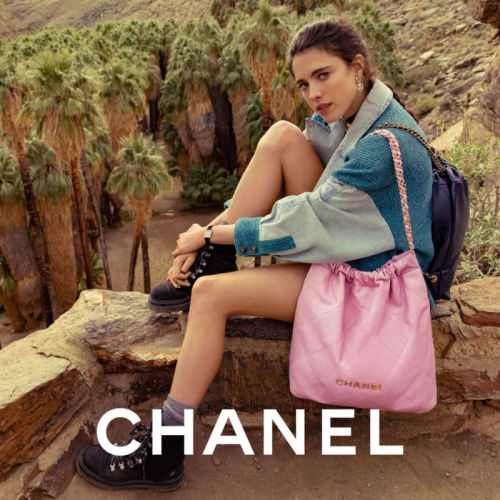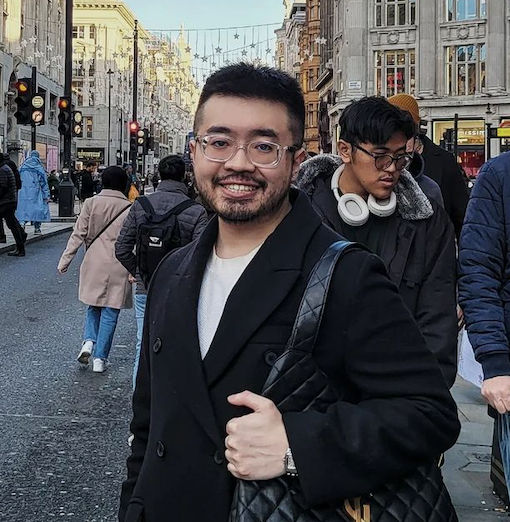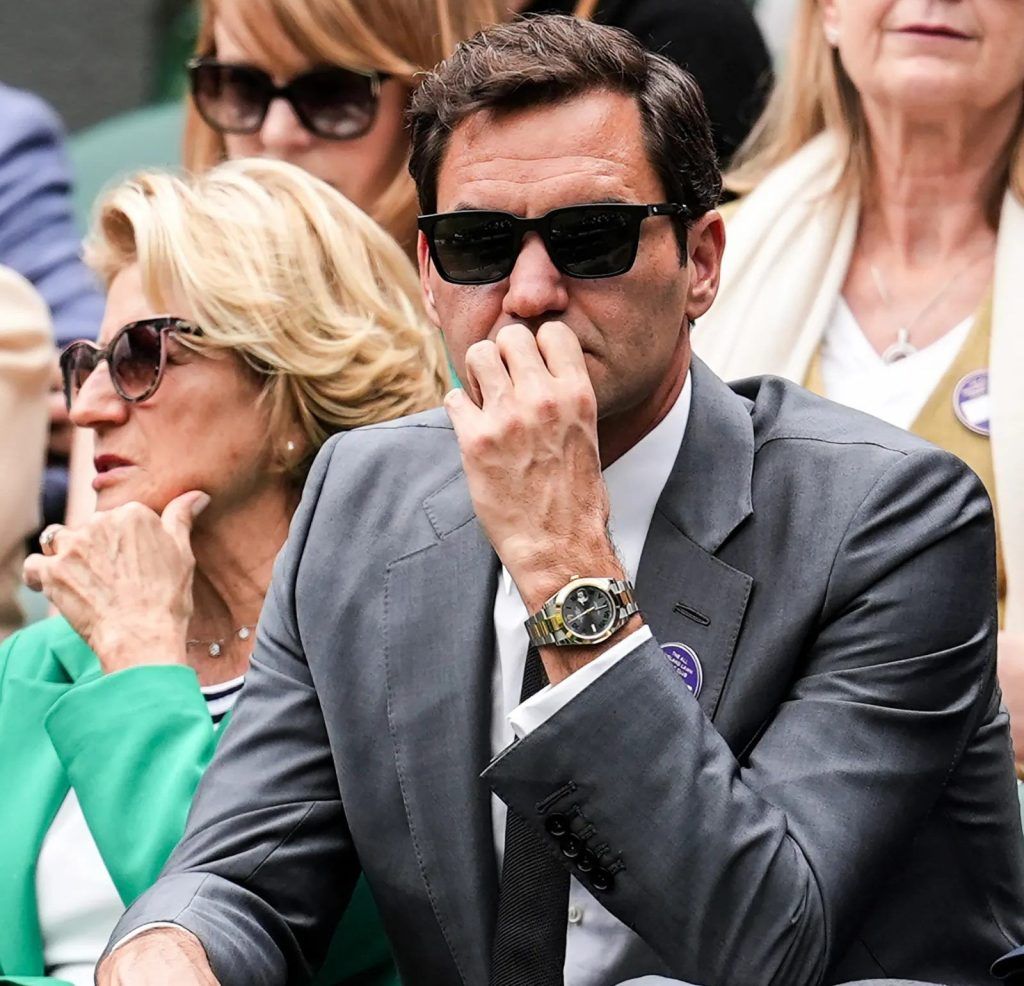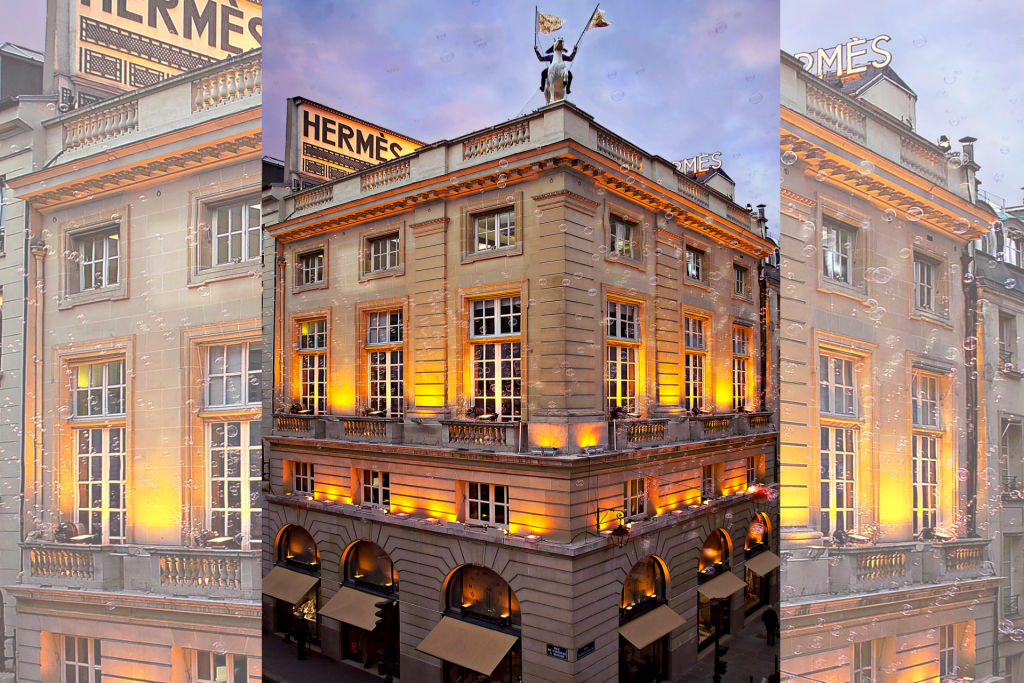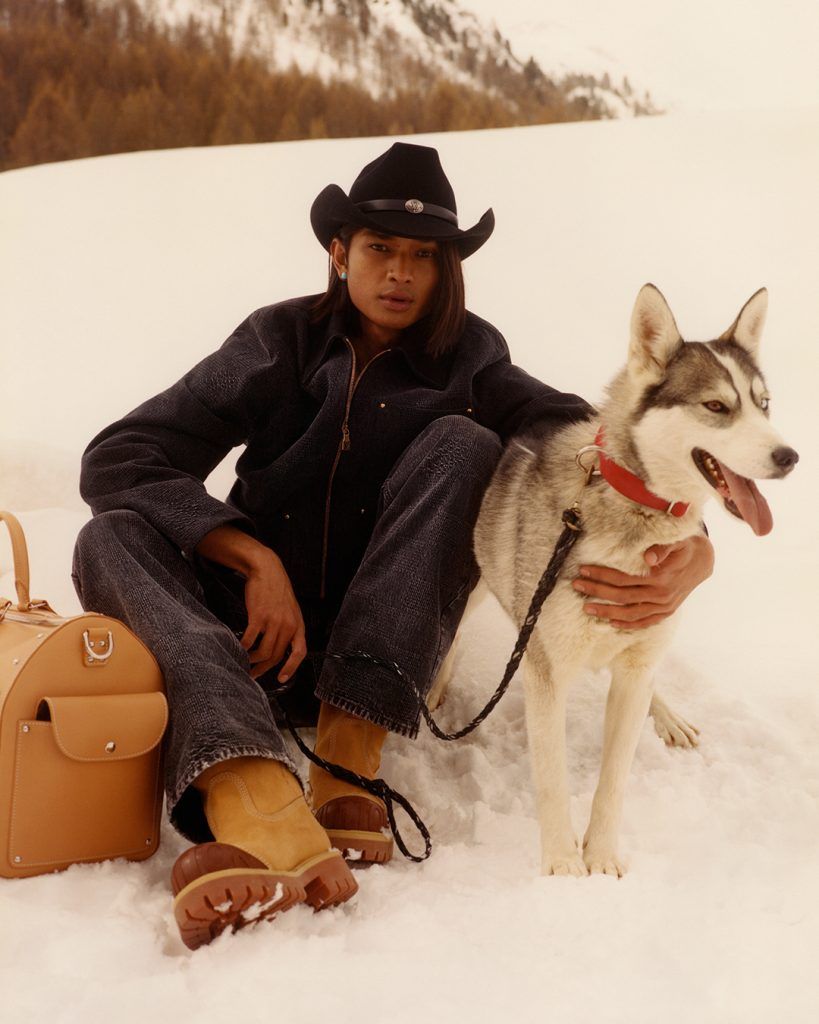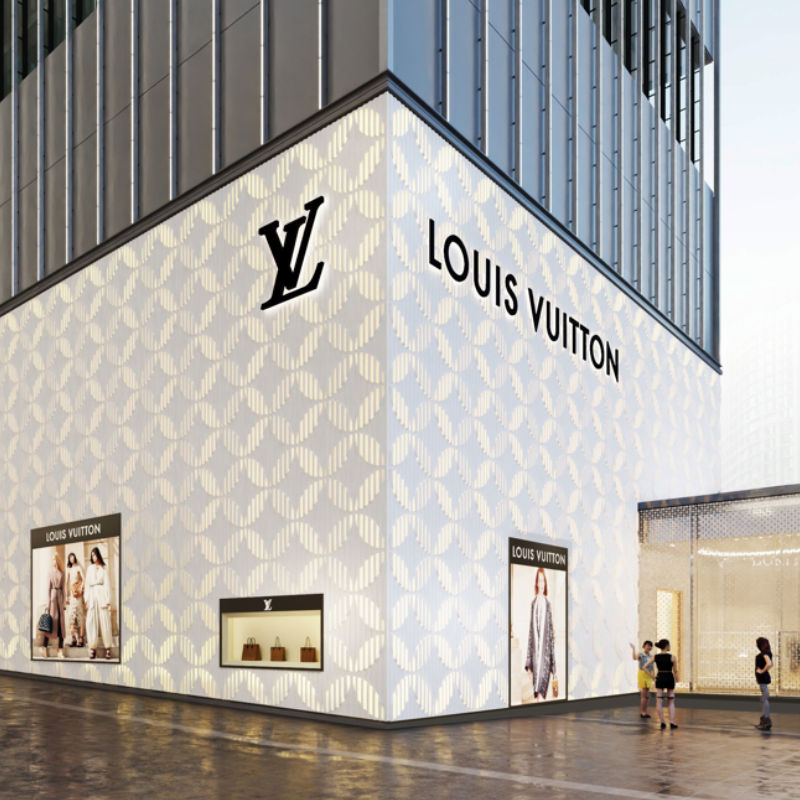After three decades in the hallowed halls of Chanel, five of which she spent leading the historic house at the helm as Creative Director, Virginie Viard has officially announced that she will be parting ways with Rue Cambon 31.
The announcement was confirmed by Chanel through a press statement that was issued late last week, which read “Chanel confirms the departure of Virginie Viard after a rich collaboration of five years as artistic director of fashion collections, during which she was able to renew the codes of the house while respecting the creative heritage of Chanel, and almost 30 years within the house,”.
Who could take up the role as Chanel’s next Creative Director after Virginie Viard?
Her appointment to the role in 2019 occurred shortly after the passing of the inimitable Karl Lagerfeld, whose pervasive influence at Chanel for 36 years helped not only to revive the once-staid legacy label into mainstream relevance but also turned it into one of the most valuable and indeed, prominent brands within the industry. It came as little surprise for industry insiders who have followed the trajectory of Lagerfeld’s career, given how Viard had served as his right-hand upon joining Chanel in 1987.
Prior to her role as Creative Director, Viard had led Chanel’s creation studio and oversaw the execution of its 10 annual collections, ranging from haute couture to ready-to-wear and cruise.
Despite a brief tenure, her efforts in stewarding and charting Chanel’s post-Lagerfeld path have largely proven successful, even in the face of criticism that her designs lacked innovation or freshness. This was best indicated by a 16% uptick in revenue totalling $19.7 billion back in 2023, with the house’s global chief executive officer Leena Nair adding that it had doubled the size of its distribution network in the last five years.
The question now remains: with one of fashion’s most coveted roles now vacant once again, just who would be fit to take on the job? Candidates are aplenty, of course, given the recent leadership toss-up across multiple labels. Hedi Slimane from CELINE for one, is rumoured to be taking his bow soon, while Alexander McQueen’s Sarah Burton remains incognito since her departure last year. Similarly, Pierpaolo Piccioli has yet to announce any major moves after leaving Valentino in late March.
While we may not have a crystal ball to peer into fashion’s past or future, here is a roundup of names whom we think could make the cut for Chanel’s next Creative Director stint.
Feature and hero image credit: Chanel’s Artistic Director of the Fashion Collections, Virginie Viard, acknowledges applause after presenting creations from her collection during the Women’s Haute-Couture Spring/Summer 2024 Fashion Week in Paris on January 23, 2024. EMMANUEL DUNAND / AFP
Jump To / Table of Contents
Jeremy Scott
American designer Jeremy Scott may not necessarily be the first name to come to mind when discussing a roll-call on potential creative director appointments at Chanel, but one should not make the mistake of writing him off entirely for the position. After all, with ten years under his belt leading Moschino from between 2013 to 2023, he has proven his merit as a creative visionary for effectively translating the Milanese house’s typically campy, novel, and overexaggerated codes into mainstream palatability.
Novelty is especially relevant in this case, as evidenced by Karl’s penchant for grandiose whimsy that was most frequently expressed through Chanel’s Metier d’Arte collections, where themed minaudier clutch bags in the shape of everything from buses to shipping containers have become some of their most coveted collectibles. Let’s also not forget that Moschino has historically satarised many of Chanel’s house codes, introducing tweed suits and quilted bags that echoed those from Paris, proving Scott’s fluent comprehension of Rue Cambon 31’s house codes.
Image credit: Jeremy Scott/Instagram
Sarah Burton
Karl Lagerfeld had Virginie Viard, Alexander McQueen had Sarah Burton. The 50-year-old English designer shares more than just a few parallels with Viard, especially with their respective associations with fashion legend. Joining McQueen’s eponymous label in 1997 upon her graduation from the prestigious Central Saint Martins College of Art and Design, Burton would eventually lead the Womenswear department in 2000, a role which she held up until McQueen died in 2010, whom she replaced as Creative Director.
In that capacity, she proved her mettle by not only maintaining many of the label’s inherent tenets, such as its reverence of heritage and Gothic fashion but also breathing a new, fresher edge to McQueen by streamlining its aesthetic to better suit a contemporary palette, with a particular focus on tailoring that her mentor himself had championed during his Saville Row days. Since departing in September of last year from the brand, she has not announced any plans to return to fashion for the time being.
Image credit:British fashion designer Sarah Burton acknowledges the audience at the end of the Alexander McQueen Women’s Fall-Winter 2020-2021 Ready-to-Wear collection fashion show in Paris, on March 2, 2020.
FRANCOIS GUILLOT / AFP
Marc Jacobs
Karl Lagerfeld is often associated with his successful reinvention of Chanel during the 1980s, successfully taping into the zeitgeist of the moment by reinterpreting its most recognisable motifs with a much-needed touch of spirited verve. Marc Jacobs was credited for doing the same at Louis Vuitton, having taken on the title of Creative Director of the heritage luggage maker back in 1997. Before that, he had already gained considerable fanfare for being the youngest designer ever to receive the Perry Ellis Award for New Fashion Talent from the CFDA in 1987.
Well-attuned to the pulse of youth culture (a virtue that he maintains to this day as evidenced by his HEAVEN subdivision), Jacobs propelled Louis Vuitton from old-world sensibilities into new money flash for the new millennium, especially through the practice of artist collaborations with such luminaries as Takeshi Murakami and Yayoi Kusama, bridging the gap between fashion and art. Since departing Louis Vuitton in 2014, he has continued to work actively on expanding his namesake label, which begs the question if he can be tempted to take on the new vacancy at Chanel.
Image credit: Marc Jacobs/Instagram
Hedi Slimane
As for French provenance, Hedi Slimane has led the charge as one of the industry’s favourites to take over the reins at Chanel from Virginie Viard. While it has not been confirmed in an official capacity by the designer himself nor the label, rumour has it that Slimane will be exiting CELINE in the coming months after staging his Autumn/Winter 2024 menswear showcase.
Boasting a prolific repertoire as both a photographer and later, as a designer, Slimane is one of the rare few acclaimed creative directors in fashion who lacked any prior formal training in the field. Despite this, his work in fashion with Yves Saint Laurent and later, Dior Homme, was received with both critical and commercial success, a trend which followed into his time at CELINE. In fact, one of his biggest devotees had been Lagerfeld himself, who had at one point, lost a considerable amount of weight to fit into Slimane’s signature designs. It helps that his trademark boyish, slick, and seductive aesthetic gels easily with Chanel too.
Image credit: French designer Hedi Slimane acknowledges the public at the end of the Celine Menswear Ready-to-wear Spring-Summer 2023 Fashion Week in Paris on June 26, 2022.
JULIEN DE ROSA / AFP
Tom Ford
Talk about sexy, and we would be remiss not to bring Tom Ford into the fold. Not unlike Slimane, he too lacked a formal fashion education, having graduated with an undergraduate degree in architecture when he joined the fashion industry as a design assistant. But if there is one thing you need above all else to make it in the world of high sartorial glamour, it’s style; of which Ford had in surplus.
In a fortuitous alignment of fates, Tom Ford would find himself being appointed as chief women’s ready-to-wear designer at an ailing Gucci, before subsequently being prompted to Creative Director in 1994. The result was a landmark moment in fashion history, with Ford ushering a chrysalis for the Italian luxury house with jewel-tone satins, plunging necklines, and deft use of their most storied motifs that transformed it into an overnight hit. That same design language was extended further into his own label, which remains well-received to this day. With that said, Ford stepped down from his role as creative director in April of 2023, and has remained relatively under-the-radar since.
Image credit: Tom Ford/Instagram
Haider Ackermann
Only a scant handful of designers have ever received an open endorsement of support from Karl Lagerfeld, and among those few include Colombian-born French designer, Haider Ackermann. Mentored by John Galliano, he was even tapped to replace him in Dior at one point. That’s no surprise of course, given Ackermann’s exacting perfectionism and inherent talent for drapery and layered tailoring, which has often resulted in incredibly complex and architectural shapes.
Heading his label since 2001, Ackermann is often described as being ‘the next Yves Saint Laurent’. Such was the quality of his work that Karl Lagerfeld had once said in 2010 that if he were to pick a successor for himself at Chanel, he would readily hand the reins over to Ackermann. Most recently, the 53-year-old has taken on the role of creative director at luxury outerwear label Canada Goose.
Image credit: Haider Ackermann/Instagram
Pierpaolo Piccioli
Much of what we recognise as Valentino today can be attributed directly to the efforts of Pierpaolo Piccioli. Finding his start at Fendi, where he worked for ten years, Piccioli would strike a lifelong friendship with fellow designer, Maria Grazia Chiuri. The duo would go on to work under Valentino in 1999, before subsequently being appointed co-creative directors of the brand in 2008. During this time, modern house codes such as the Rockstud motif were introduced, which earned the label a new catchment of clients well into the late aughts.
But when Grazia departed for Dior in 2016, he became the sole creative director for Valentino, a time marked by now iconic creations such as the Valentino VLogo emblem, as well as his namesake PP Pink hue. He departed from Valentino in March of this year, with Alessandro Michele set to replace him as creative director. Highly driven by a sense of joy and euphoria in his work, many of his collections are best remembered for their use of colour and volume, attributes which can play well with Chanel’s propensity for joie de vivre in the 1990s.
Image credit: Pierpaolo Piccioli/Instagram


